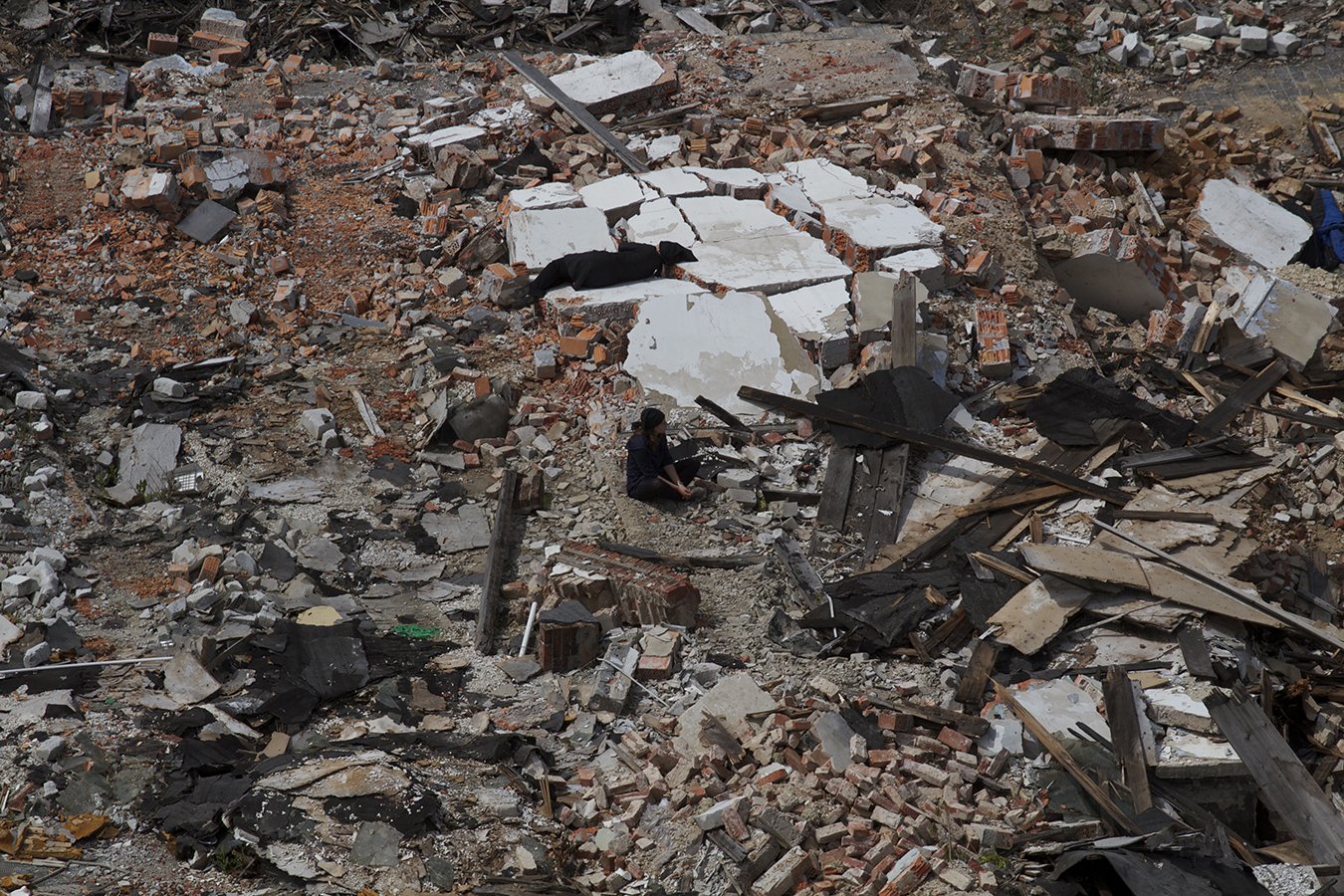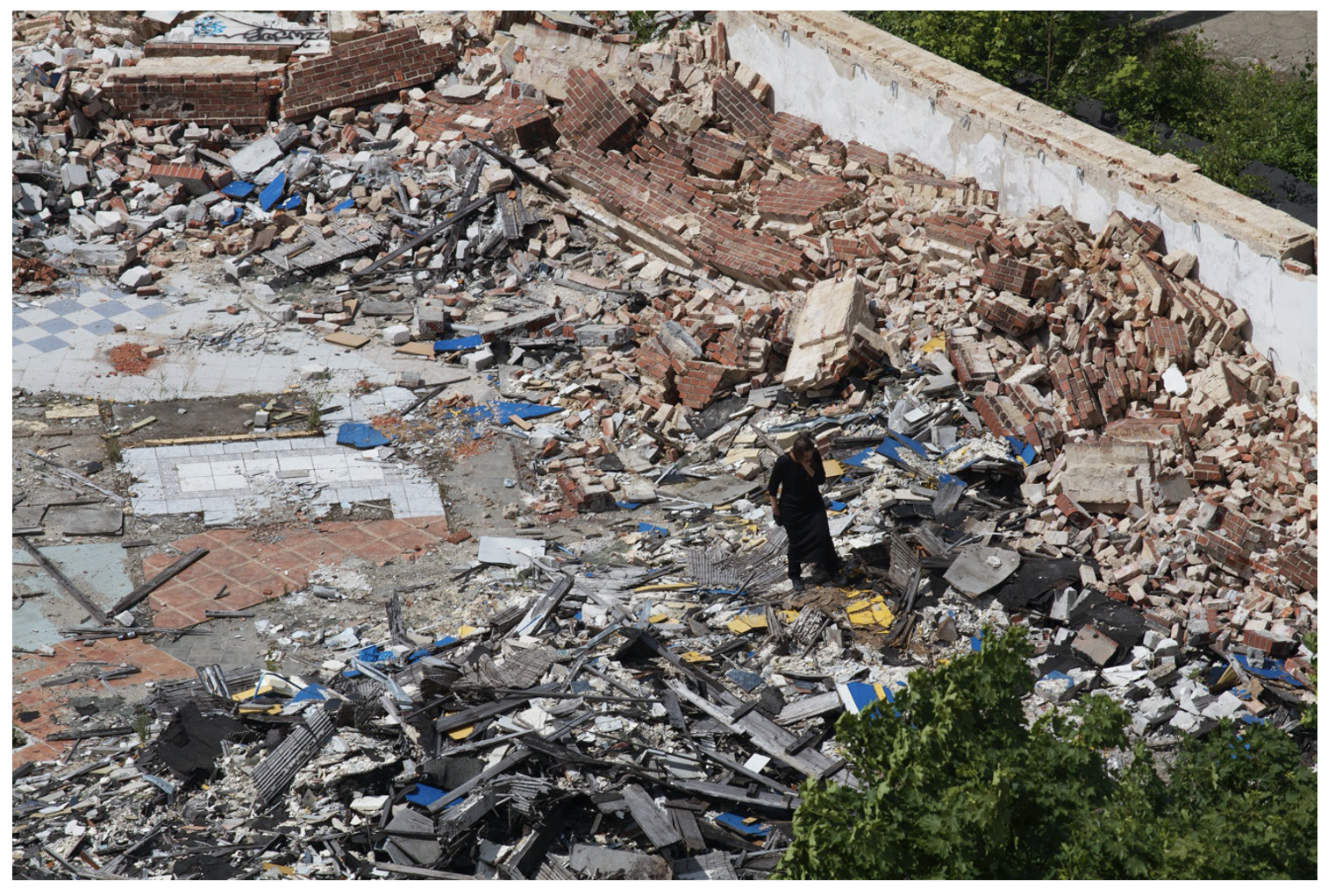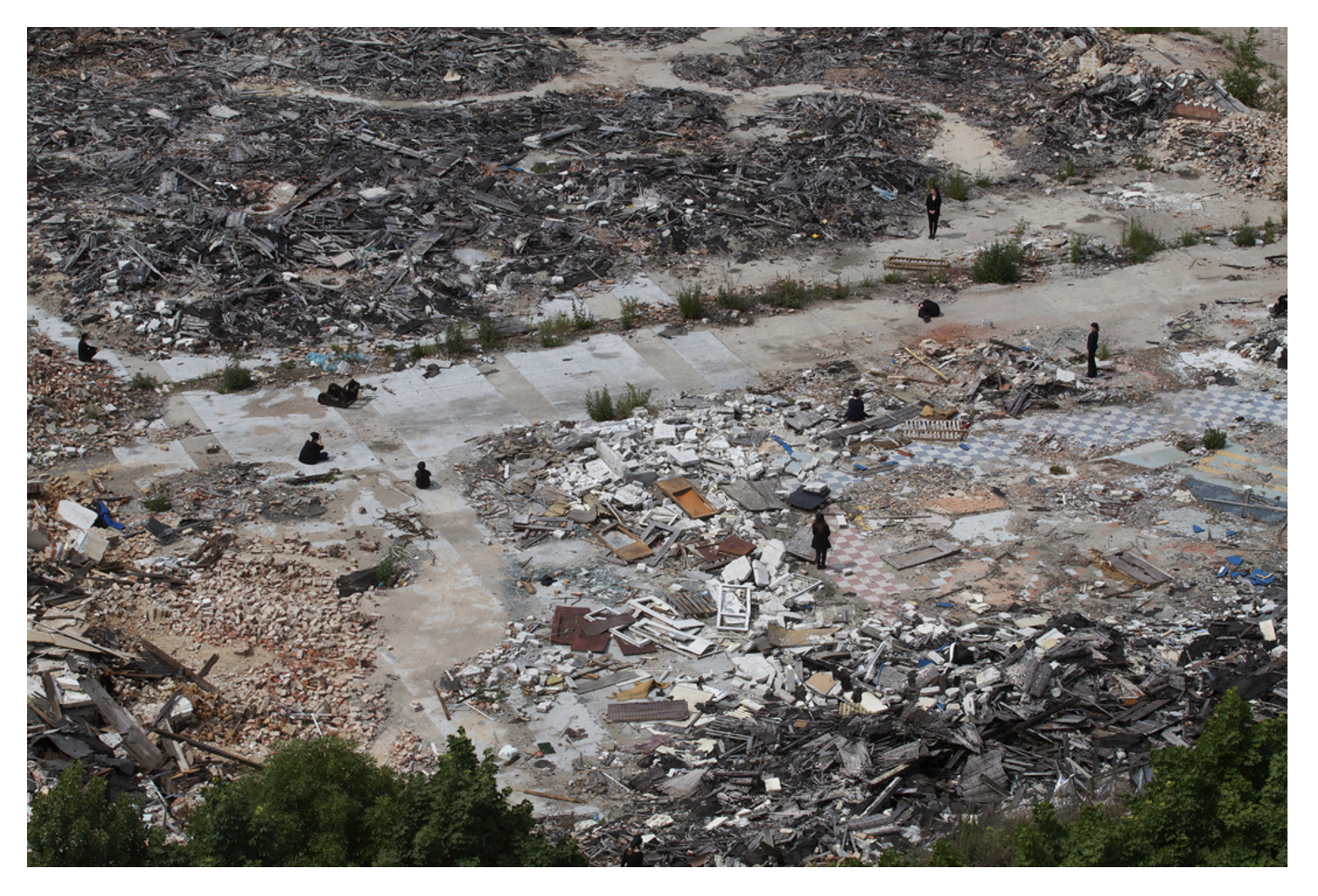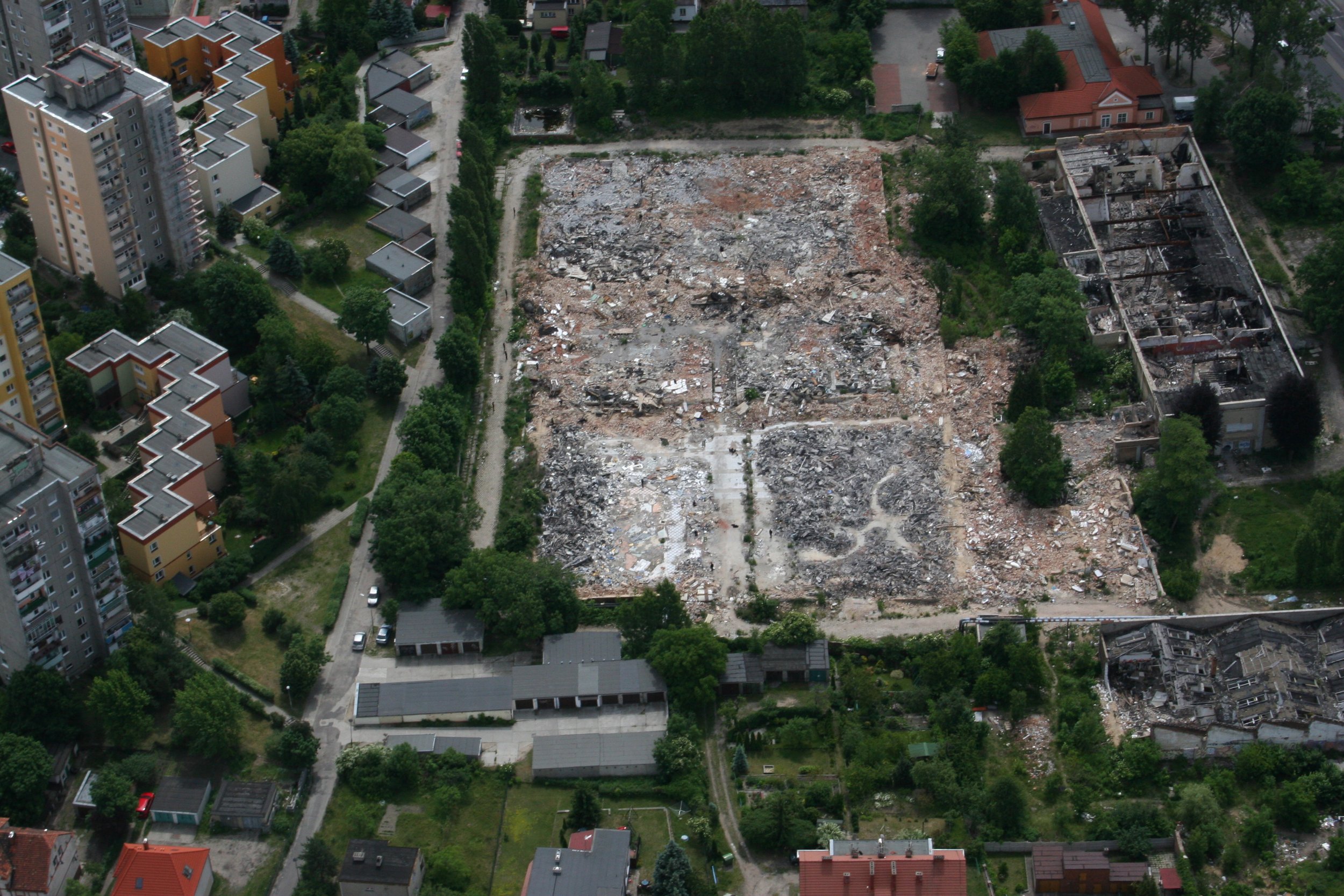shrouds - całuny
Shrouds - Całuny (Aerial Photography Series II), 2012, edition 1 of 3 + 2AP. View of the public project which took place on the grounds of the former German concentration camp for Jewish women, Grünberg, today in Zielona Góra, Poland, curated by Wojciech Kozłowski
Shrouds – Całuny
2012
site-specific public project with participation of local women
two-channel high definition video and sound composition, limited edition, 3 + 2 AP
series of aerial photographs, dimensions variable, limited edition, 3 + 2 AP
installation of 30 color photographs, 13 x 19 inches / 33 x 48 centimeters each, 75 x 120 inches / 190 x 305 centimeters total size, limited edition, 3 + 2 AP
below: excerpt from high definition video and sound work (view of the work as a single-channel projection), this work has also been presented as two separate video projections as well as on two individual monitors, limited edition, 3 + 2AP
below: selected individual aerial photographs, limited edition, 3 + 2AP
below: installation of 30 photographs, limited edition, 3 + 2AP
Shrouds-Całuny, 2012, installation of 30 color photographs
Credits
written, directed, choreographed, filmed and edited by Monika Weiss
music composed by Monika Weiss, with participation of opera vocalist Anthony Roth Costanzo
movement performers: Kornelia Bagińska, Barbara Barszczewska, Ada Bednarek, Alicja Bienias, Magda Chołuj, SandraDawidowicz, Małgorzata Dobrucka, Iga Drop, Kamilia Gołdyka, Weronika Jankowiak, Aleksandra Kubiak, Katarzyna Kulikowska, Gillian Lipton, Marta Meuss, Sylwia Mucha, Apolonia Obuchowicz, Anna Perzyńska, Dorota Pillach, Maryna Ponomarenko, Agata Rowecka, Karolina Spiak, Sofia Symkanycz and Michalina Walicht
Artist Statement
Do cities remember? Maps of cities are flat, yet their histories contain vertical strata of events. Where in the topography and consciousness of a city can we locate its memory? Maps of the Polish city Zielona Góra depict an unmarked empty square near Wrocławska Street, across from the Focus Park shopping mall. Located centrally within the city, it looks abandoned, strewn with broken masonry and wood debris. Inquiries to citizens of Zielona Góra indicate that many of them do not know its history, including those who grew up near the site. Before the war, Zielona Góra was in Germany, known as Grünberg. During the Second World War the site was a forced labor camp, mostly for Jewish women, which later became a concentration camp. It was developed next to the German wool factory, Deutsche Wollenwaren Manufaktur AG, which supplied the German war machine with military uniforms (its buildings across the street have since been converted into a shopping mall.) During the war about 1,000 young women who were made to work there as seamstresses eventually became inmates of the concentration camp complex administered by KZ Groß-Rosen. Towards the very end of the war the prisoners were sent on one of the most tragic of death marches and many of them died. On June 9th, 2012, I flew on a small airplane to film this territory and its surroundings and to photograph the performance in the ruins. In the film we see well-kept buildings surrounding the ruins of the former camp, as though it were an open yet forgotten wound in the body of the city. I choreographed and filmed from the airplane a group of young women from Zielona Góra who spent time in silence on the site of the camp, performing minimal gestures of lamentation and evoking the absence of the prisoners through their own presence. They left their black scarfs in the debris. In the resulting installation, the viewers encounter two suspended projection screens with the films visible on both sides, so that the viewers can walk around them. On one projection screen we see the women performers filmed from a great distance, with their bodies so small, that they seem almost disappearing. The second projection shows a torso of a young woman, wrapping bandages around her naked chest in a gesture of defense, or perhaps, a gesture self-caress. In Polish the word całun means “shroud”, but also, etymologically connects to the word pocałunek, in English, “kiss”. Shrouds addresses aspects of public memory and collective amnesia in the context of the space of a city and its urban design. As part of the project, citizens of Zielona Góra were invited to propose how we choose to remember, or not to remember, the women prisoners who perished there, and how the non-memory accomplishes the Nazi goal of systematic destruction of an entire people.
- Monika Weiss
Essay Excerpt
The title’s shrouds do not heal, do not dress, and do not calm. They are signs of memory’s clinical death, a condition where we are still able to turn back.
– Wojciech Kozłowski, in Recall: Roland Shefferski and Monika Weiss, BWA Zielona Góra, Poland, 2014
Review Excerpts
Weiss’ formative works addressed events during World War II and highlighted violence perpetrated against the human body, specifically the female or ill who are often the most vulnerable to casualties. [...] Weiss questions how one should remember the events that have transpired when the present sites are banished to entropy or, in the case of this specific site, might be transformed into a junk space shopping mall. – Vanessa Gravenor, Monika Weiss’ Two Laments, in n.paradoxa: journal of feminist art, vol. 37, 2016 (to read full text click here)
[Weiss] is interested in projects of commemoration and memory, raising questions about how an artist—not a witness or a survivor—should react to the traumas of history and what constitutes post-memory. In Poland, where disclosure of the atrocities at Jedwabne (...) has created an ongoing crisis in Polish-Jewish relations, there’s excruciating sensitivity about memory of the war years. To whom does memory belong? Who has the right to respond to it? […] – Frances Brent, The Lamentation Project, in Tablet Magazine, June 2016 (to read full text click here)
exhibitions
[+]ERROR, Miejski Ośrodek Sztuki, Gorzów Wielkopolski, 2019, curated by Leszek Golec and Zbigniew Sejwa
Monika Weiss - Całuny, Galeria BWA, Zielona Góra, 2012, curated by Wojciech Kozłowski
Publications:
RECALL: Rolland Schefferski & Monika Weiss, Muzeum Ziemi Lubuskiej & Galeria BWA Zielona Góra, Poland, 2014
Monika Weiss-Nirbhaya, Centre of Polish Sculpture in Orońsko, Poland, 2021











